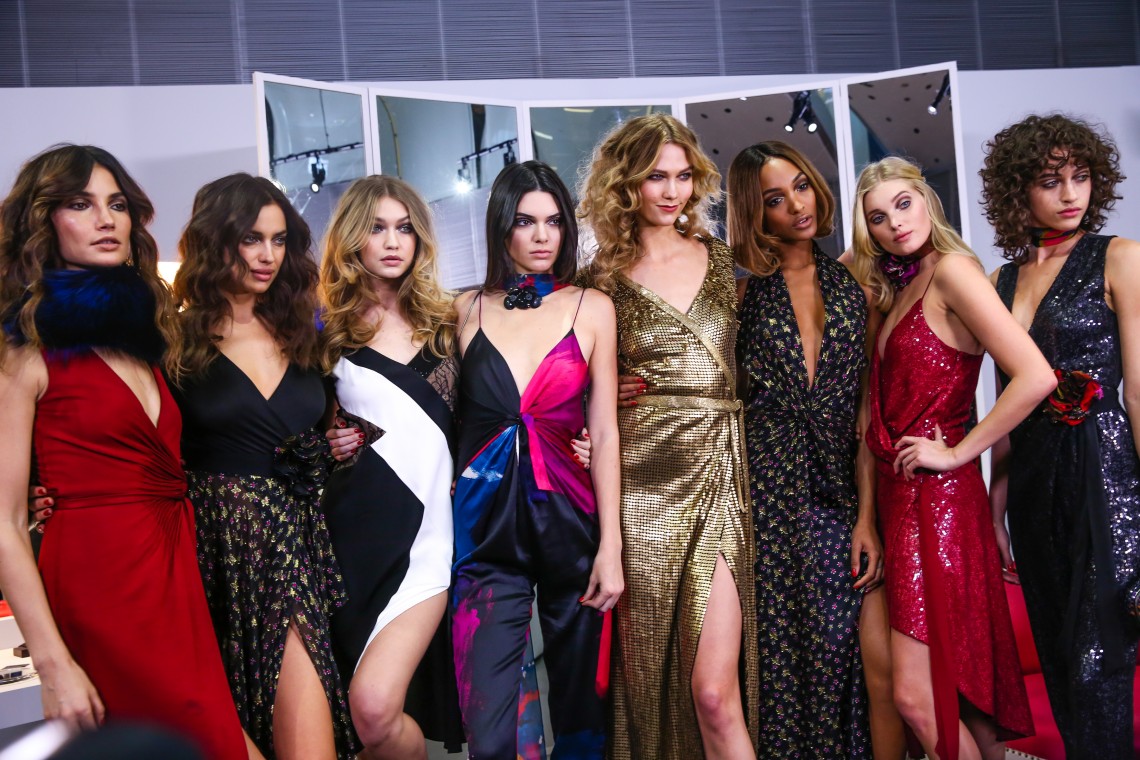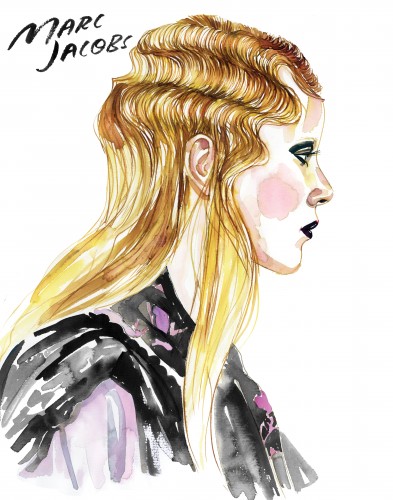Booth Moore’s NYFW Diary: The Changing Runway Model
February 15, 2016
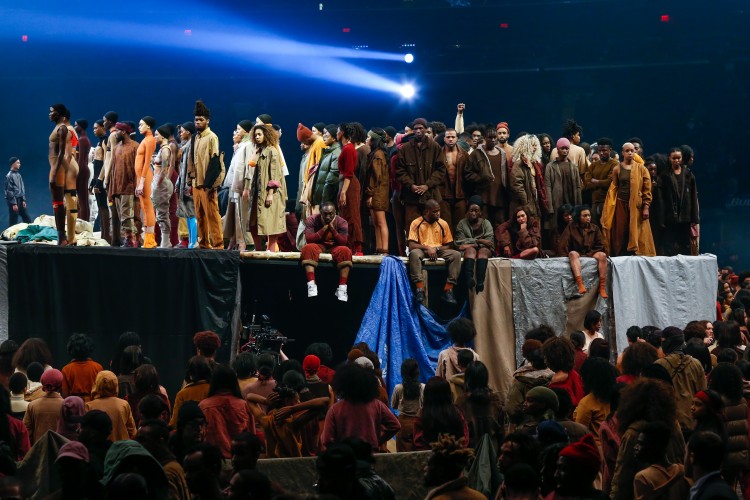


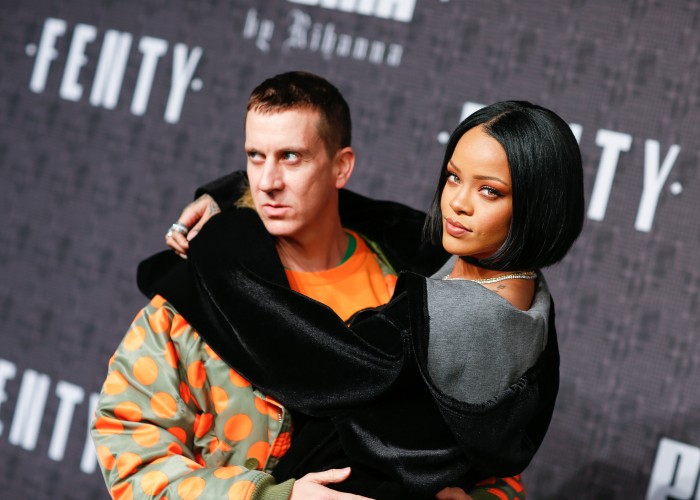
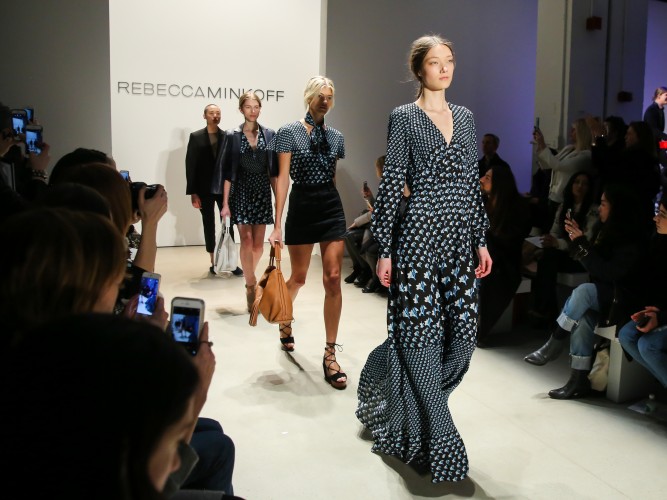
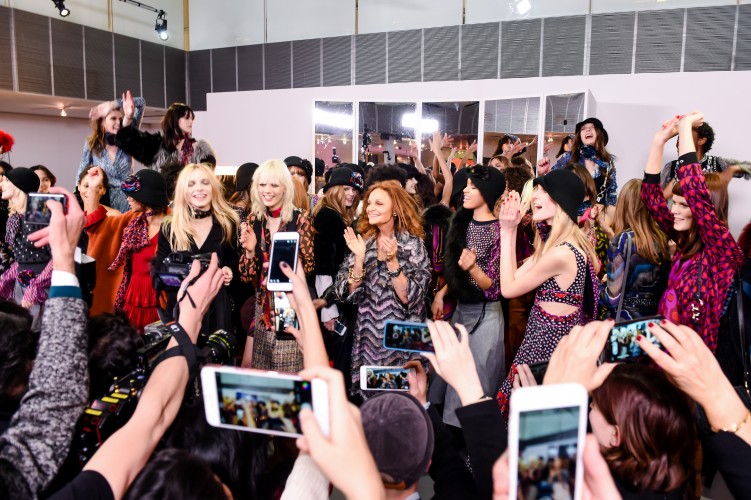
Yeezy Season 3
Jeremy Scott and Rihanna
Rebecca Minkoff
Diane Von Furstenburg
More than any single designer, show or trend, the chatter in the seats this season is about the system and how it’s a-changing.
Recalibrating the runways can be a messy affair. As more designers announce plans to switch to consumer-driven shows, a lot of questions will need to be answered; at the most basic: who’s in-season and who’s out-of-season, and what season is it outside anyway?
Confusion could ensue. And yet, everyone seems to agree, change is good.
From a personal perspective, nothing makes me want to shop more than seeing a killer fashion show.
When lights, music, models and clothes mix just right, they create a cocktail of desire. And next thing I know, I’m back home at my computer, searching the Internet for something that doesn’t exist yet because a designer’s vision was so incredibly cool, I want it now.
Thanks to social media and livestreaming shows, fashion fans tuning in on their home screens are getting the same taste. Which is why the runway could be such a tremendous platform and sales tool.
I was reminded of it Friday night after I tweeted a photo of a fabulously clever, fuzzy backpack-meets-hand warmer from Rihanna’s first runway show for her Puma Fenty collection, which won’t hit stores until September.
“I want”
“I neeeeeeeed this”
“This needs to be @StudentStores TOMORROW”
The comments kept rolling in, all from people who weren’t even at the show, but catching a blurry glimpse of it on social media.
Of course, there’s power in celebrity to bring in social media likes, and Rihanna being Rihanna, Puma won’t have any trouble selling the Fenty collection six months from now, even if a fast fashion retailer does knock off her high heel sneakers and backpack-meets-hand warmer before then.
But there’s also power in the moment.
In a time when many consumers are expressing the desire for experiences more than material goods, a fashion system shift not only offers immediate gratification for insiders and outsiders alike, it also offers an opportunity for designers to really capitalize on increasingly entertaining (and expensive) runway extravaganzas with fashion as a souvenir.
Kanye West played to that idea with his Yeezy 3 show and album listening party at Madison Square Garden, where thousands of guests who already paid for tickets also bought souvenir “I Am Pablo” T-shirts, hoodies and hats. His fans were caught up in the moment alright; they stood in line in droves to buy the merch, shelling out bank. Imagine what would have happened if the actual fall/winter Yeezy collection had been for sale?
Or if Alexander Wang had been ready to dispense the pot leaf embroidered dresses and pole dancer pullovers that came down his runway Saturday night, and dominated social media afterward? Viewers who tuned in to see the clothes and Wang’s starry front row, with none other than “Cookie Lyon” Taraji P. Henson, could have been converted to shoppers in an instant.
Same goes for the Opening Ceremony show, where Humberto Leon and Carol Lim treated guests to a stage set of inflatable hover crafts inspired by Hollywood’s favorite visual futurist Syd Mead, known for creating cityscapes and vehicles for “Blade Runner,” “Aliens” and “Tron.”
When the T-shirts and knits featuring Mead’s artwork came out onto the runway, I wanted to leave with a souvenir right then.
A great show, witnessed live or on social media, should have the power to open wallets,
which is why Rebecca Minkoff presented her first #SEEBUYWEAR runway collection. Industry insiders gathered alongside some of the brand’s best customers to see spring clothes in stores and online now.
Only time will tell if immediacy and access translate into actual sales. Still, I couldn’t help but feel like I was glimpsing the future of fashion week in the sea of smart phones held aloft by the crowd as the band Zella Day played and the models walked, even if there was still a bit of a disconnect between the festival-ready peasant dresses and gladiator sandals coming down the runway and the frigid February temperatures outside.
Diane von Furstenberg made a case for fashion in-the-moment when she hosted an experience at her Meatpacking District headquarters Sunday night that was tailor made for social media–and for selling.
Champagne was served, guests could pose in front of a selfie wall, or snap photos of supermodels Karlie Kloss and Kendall Jenner disco dancing with Diane herself to “We Are Family.” It was a house of DVF house party, with several “Hollywood ready” looks available for sale simultaneously online.
It’s fair to say the idea of producing consumer-driven shows and runway experiences could be more challenging for those who don’t have the built-in fan base of Rihanna and Kanye West, Wang, Opening Ceremony, Minkoff or von Furstenberg, plus marketing and production budgets, and their own sales channels.
But the shift could also take pressure off those smaller designers who don’t really have funds for elaborate runway productions in the first place, as well as offer an opportunity for retailers and the media to step up their role of discovering, nurturing, showcasing and supporting new talent.
And really, when it comes to the thrill of the runway, isn’t it about time we invited the rest of the world to the party?
